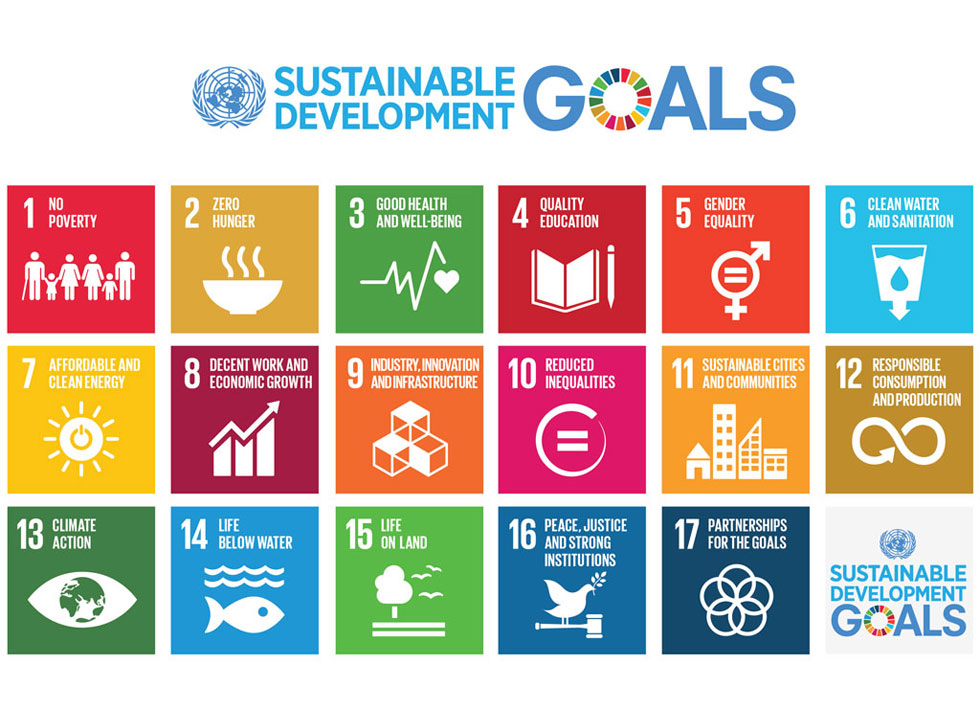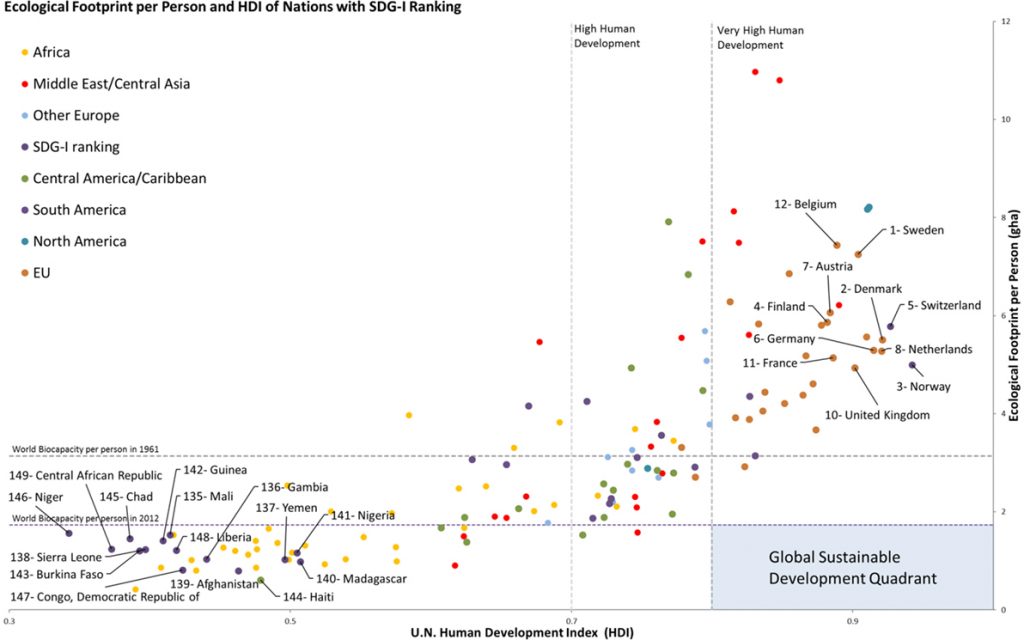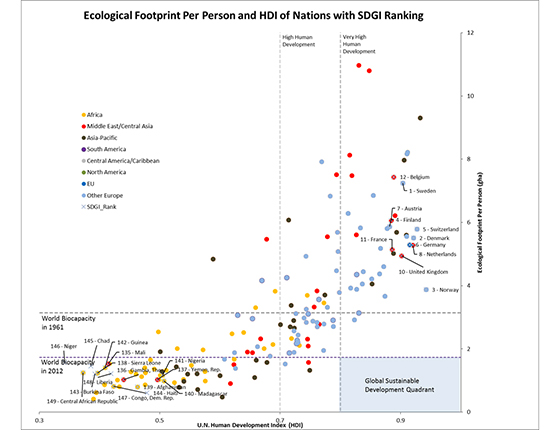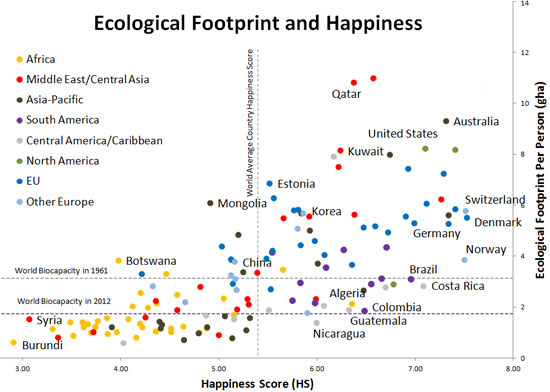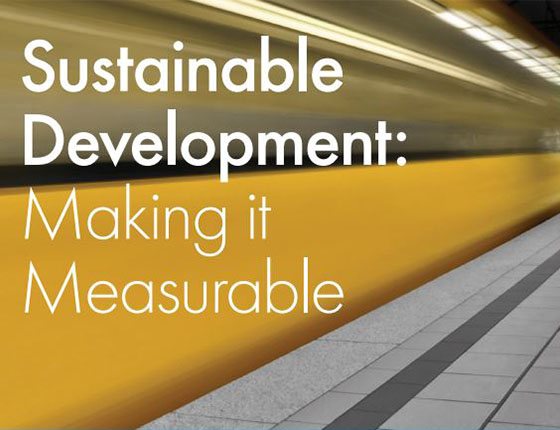This month, the UN General Assembly (UNGA 72) will convene in New York City for its 72nd Regular Session. The summit’s theme is “Focusing on People: Striving for Peace and a Decent Life for All on a Sustainable Planet.” The phrase closely echoes Global Footprint Network’s vision “that all people can live thrive within the means of our planet.”
Which prompts us to raise the question, why won’t the significance of resource security, planetary boundaries, environmental resilience, or any of these themes be included in the topics of discussion at UNGA 72?
This blind spot is nothing new. In a recent article published by Frontiers in Energy Research, Global Footprint Network highlighted how the UN Sustainable Development Goals (SDGs) adopted two years ago this month are vastly underemphasizing sustainability. The authors of “Making the Sustainable Development Goals Consistent with Sustainability””—Footprint Network CEO and Co-founder Mathis Wackernagel, Program Director Laurel Hanscom, and Director of Research David Lin—found that countries scoring high on a recently developed SDG index also had, without exception, high Ecological Footprints per person. Using the Bertelsmann and Sustainable Development Solutions Network (SDSN)’s SDG index to quantify SDGs, the article reveals that the sustainable development goals are largely (short-term) development goals, vastly underperforming on sustainability.
Global Footprint Network and the authors of the paper are strongly in favor of the SDGs. The trio explains this contradiction by highlighting the SDG index rankings within a sustainable development framework that uses the Ecological Footprint and UN Human Development Index (HDI). The Footprint-HDI framework describes necessary outcomes for sustainability and well-being: to have high human development (as measured by HDI) within a resource demand that fits on this planet (as measured by an Ecological Footprint per person that is smaller than the world average biocapacity of 1.7 global hectares per person). What becomes evident is that higher performance on the SDG index correlates acros the board with high Ecological Footprints.
“The Ecological Footprint of the index’s top 20 ranking countries is so large that if all other countries consumed at the same rate, it would take the ecological capacity of over three planet Earths to materially support all of humanity,” they write. “This level of demand on the planet is clearly not sustainable.”
Ecological Footprint per person and HDI by country indicate how closely each country is to basic global sustainable development criteria (high human development, within resource requirements that are globally replicable). Each number indicates the country’s ranking on the Sustainable Development Goal (SDG) index (only top and bottom 10 are marked here). It shows that SDG performance closely follows a conventional rather than a sustainable development path..
The conclusions in the paper make sense if we consider that countries who are the most economically well off have achieved economic well-being through traditional economic means involving exploitation of natural resources and carbon-intense industrialization. Post industrialization, the now high-income countries are in the strongest position to implement and achieve the targets set by the SDGs. Most importantly, the paper points out that the SDGs need to increase their focus on resource security and environmental resilience in order to deliver lasting results. After all, sustainability is a prerequisite for well-being.
Wackernagel, Hanscom, and Lin conclude that the SDGs need to more robustly embrace the reality of resource constraints and climate change. The near-exclusion of resource security aspects makes the current SDGs fall short of actively advancing human wellbeing without further depleting the very natural capital on which human wellbeing and development depends, they write.
The SDGs are aimed at creating a pathway towards a sustainable future. Therefore, the SDG initiative is imminently important and needs to be strengthened as humanity’s future depends on it. However, it has to be consistent with the outcome of thriving lives for all within the means of the planet, as Wackernagel explained in a TEDx talk on measuring sustainable development outcomes.
Wackernagel, Hanscom, and Lin conclude in their recent article:
“Ignoring physical constraints imposed by planetary limits is anti-poor because with fewer resources to go around, the lowest-income people will lack the financial means to shield themselves from resource constraints, whether it is food-price shocks, weather calamities, or energy and water shortages. All the legitimate and important development gains the SDGs seek to achieve will fall tragically short without the natural capital to power the economy of each nation, region, city, or village. If we want to have a future, the SDGs need to robustly embrace the reality of resource constraints and climate change. Also, we need robust accounting tools that track the outcomes. Without such rigorous metrics, there is great risk to misallocate development investments.”
Additional Resources
Full article “Making the Sustainable Development Goals Consistent with Sustainability”
Brief introduction to measuring sustainable development outcome



